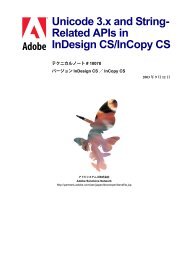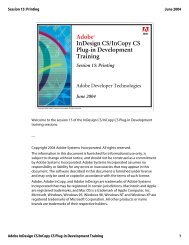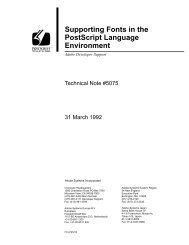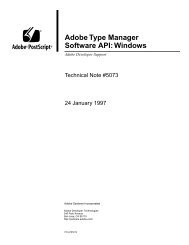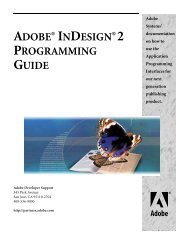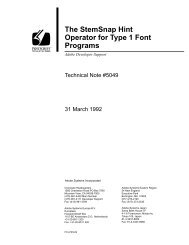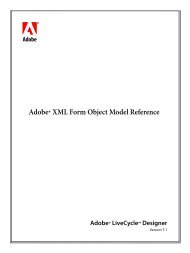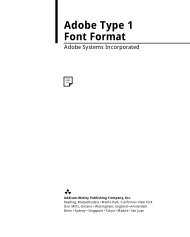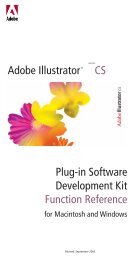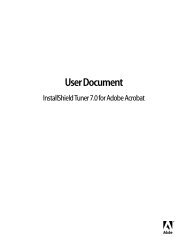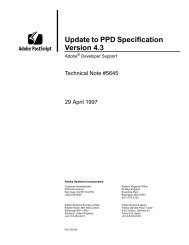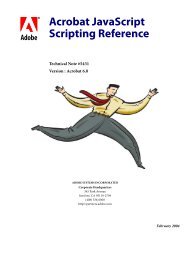XML Forms Data Format (XFDF) Specification - Adobe Partners
XML Forms Data Format (XFDF) Specification - Adobe Partners
XML Forms Data Format (XFDF) Specification - Adobe Partners
Create successful ePaper yourself
Turn your PDF publications into a flip-book with our unique Google optimized e-Paper software.
Appendix: <strong>XFDF</strong> Definitions for Comments on 3D or Rich Media Annotations<br />
<strong>XML</strong> <strong>Forms</strong> <strong>Data</strong> <strong>Format</strong> <strong>Specification</strong> Angular Dimension Related Elements 129<br />
Attributes<br />
None.<br />
Angular Dimension Related Elements<br />
An angular measurement is used to denote the angle between two linear entities, as displayed in the<br />
following figure.<br />
As illustrated in the figure above, angular measurement markup consists of two anchor points, one located<br />
on each of the two linear entities whose angle is being measured. An extension line is connected to each<br />
anchor point, which is collinear with the edge it measures. A labeled arc, with an arrowhead at each end,<br />
connects the two extension lines to specify the angle being measured.<br />
The following figure displays the key geometric parameters for an angular dimension.<br />
The angle is defined by the measurement value (30 degree in the figure above) and is the angle between<br />
the leader direction vectors (D1 and D2). The angular measurement markup is generated by first<br />
computing the center point of the angle, cp in the figure above. Since the anchor points (A1 and A2) are on<br />
the annotation plane finding the intersection of the direction vectors (D1 and D2) passing through anchor<br />
points (A1 and A2) is a straightforward process. The text position (TP) controls the position of the<br />
measurement text, the placement of the angle arc, and the length and direction of the extension lines. The<br />
extensions lines are drawn from the anchor point to a point at a distance ||TP-cp|| from the center point cp<br />
along the associated direction vector (which is the intersection of the angle arc and the extension line).<br />
The angle arc center is at the center point cp (and its radius is ||TP – cp||) and is drawn between the two<br />
extensions lines. The markup text is displayed (based on the text orientation parameters) with the lower<br />
left corner of the text string starting at the text position (TP).





